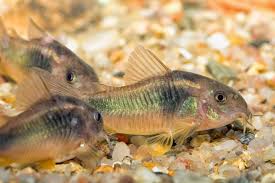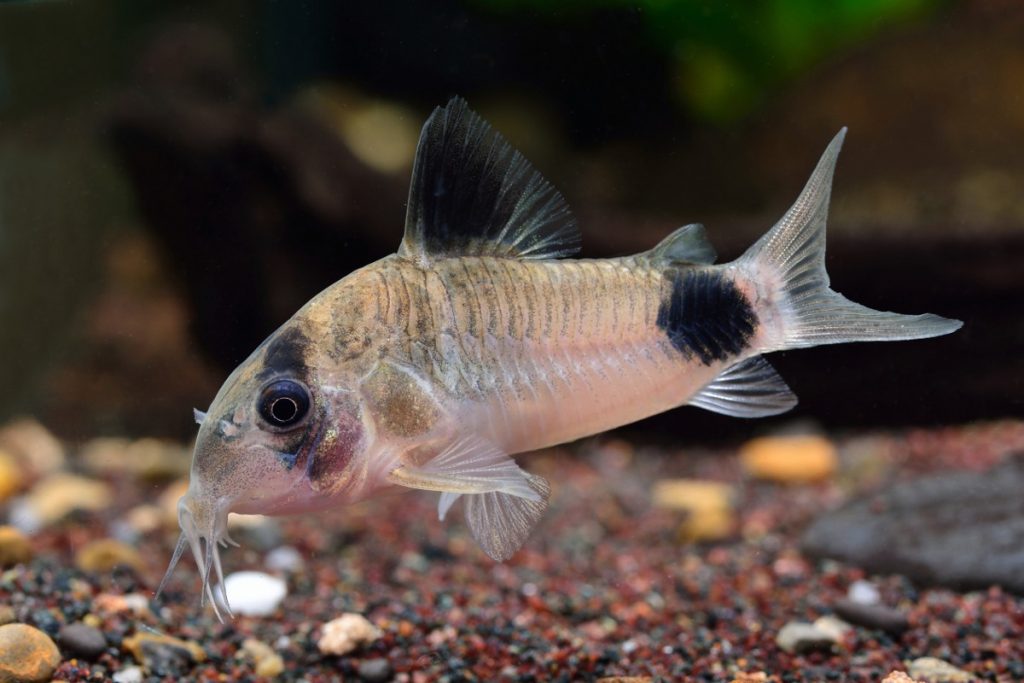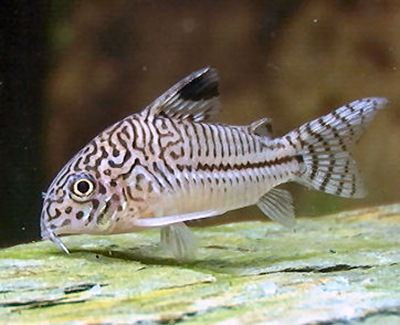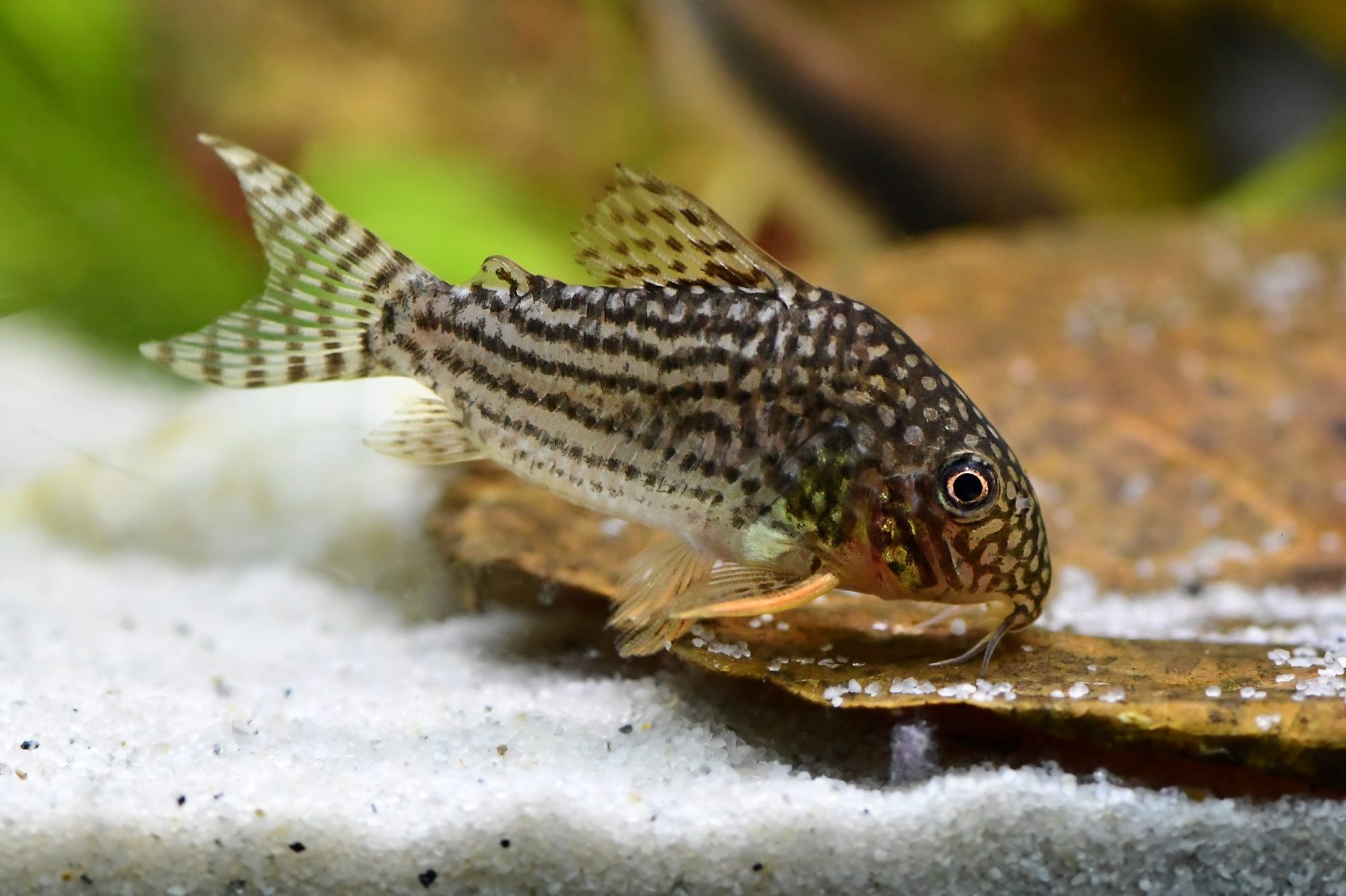Corydoras

A Comprehensive Guide to Caring for Corydoras Catfish: Your Bottom-Dwelling Friends
An in-depth look at providing the best care for these popular and peaceful freshwater fish, complete with charts for easy reference.
Corydoras catfish, often affectionately referred to as “cories,” are a staple in the freshwater aquarium hobby, cherished for their peaceful nature, industrious foraging, and charming personalities. These small, armoured catfish belong to the family Callichthyidae and are native to the slow-moving rivers, streams, and flooded forests of South America. With over 160 described species, and many more yet to be classified, there is a cory to suit almost any community aquarium. This comprehensive guide will delve into every aspect of their care to ensure your corydoras not only survive but thrive.
Natural Habitat and Why It Matters
Understanding the natural environment of corydoras is key to recreating a suitable habitat in your aquarium. They typically inhabit soft, sandy riverbeds and shallow, clear waters, often with a dense canopy of overhanging vegetation that provides shade and a supply of fallen leaves. The substrate is of particular importance; sharp or coarse gravel can damage their delicate barbels, which are essential for finding food.
The Ideal Corydoras Aquarium: A Setup for Success
Creating the right environment is the most critical step in corydoras care. Here’s how to set up their perfect home:
Tank Size: While some smaller species like the Pygmy Corydoras (Corydoras pygmaeus) can be kept in tanks as small as 45 litres (10 gallons), a larger tank of at least 60-75 litres (15-20 gallons) is recommended for a group of the more common species. This provides ample space for a shoal to forage and interact naturally.
Substrate: The substrate should be soft to protect their sensitive barbels. Fine sand is the ideal choice, allowing them to sift through it for food as they would in the wild. Smooth, rounded gravel of a small grade can also be used, but sand is preferred.
Filtration: Corydoras appreciate clean, well-oxygenated water. A good quality external or internal filter that creates a gentle flow is ideal. Avoid high-flow filters that can buffet these bottom-dwellers.
Water Parameters: While many corydoras available in the UK are commercially bred and adaptable, striving for water parameters that mimic their natural habitat will lead to healthier, more active fish.
Ideal Water Parameters for Most Corydoras Species
| Parameter | Ideal Range | Notes |
|---|---|---|
| Temperature | 22-26°C (72-79°F) | Stable temperatures are crucial. |
| pH | 6.0 – 7.5 | Some wild-caught species prefer more acidic conditions. |
| Hardness (GH) | 2-15 dGH | Softer water is generally preferred. |
| Ammonia | 0 ppm | Highly toxic to corydoras. |
| Nitrite | 0 ppm | Highly toxic to corydoras. |
| Nitrate | < 20 ppm | Perform regular water changes to keep levels low. |

Aquascaping: Provide plenty of hiding places using driftwood, caves, and broad-leafed plants like Anubias and Java Fern. These not only offer security but also surfaces for them to rest on. A well-planted tank will also help to maintain water quality.
Diet and Nutrition: Fuelling Your Foragers
Corydoras are omnivores and require a varied diet to thrive. In the wild, they feed on a mix of insects, larvae, worms, and plant matter.
A Balanced Diet for Corydoras
| Food Type | Examples | Frequency |
|---|---|---|
| Sinking Pellets/Wafers | High-quality catfish pellets, algae wafers | Daily (staple) |
| Frozen Foods | Bloodworm, daphnia, brine shrimp, tubifex worms | 2-3 times a week |
| Live Foods | Cultured white worms, grindal worms, daphnia | Occasionally as a treat |
| Vegetables | Blanched courgette, cucumber, shelled peas | Occasionally |
Feeding Tips:
- Feed in the evening or when the tank lights are dimmed, as corydoras are more active during these times.
- Ensure food reaches the bottom, especially in a community tank with more boisterous mid-water feeders.
- Observe your corydoras to ensure they are all getting enough to eat. A healthy cory will have a slightly rounded belly.

Social Behaviour and Tank Mates: The Importance of Shoaling
One of the most crucial aspects of corydoras care is their social nature. They are a shoaling species and should never be kept singly. A group of at least six individuals of the same species is recommended. In a shoal, they will feel more secure, exhibit more natural behaviours, and be less prone to stress.
Suitable Tank Mates: Corydoras are exceptionally peaceful and can be kept with a wide variety of other community fish. Good choices include:
- Tetras (Neon, Cardinal, Rummy-nose)
- Rasboras (Harlequin, Chilli)
- Livebearers (Guppies, Platies, Mollies)
- Dwarf Gouramis
- Other peaceful bottom dwellers like Otocinclus catfish.
Tank Mates to Avoid: Avoid large, aggressive, or boisterous fish that may outcompete the corydoras for food or harass them. This includes many cichlids, large barbs, and aggressive catfish.
Breeding Corydoras: A Rewarding Challenge
Breeding corydoras can be a fascinating project for the dedicated aquarist. The most common trigger for spawning is a large, cool water change, mimicking the onset of the rainy season in their natural habitat.
Breeding Setup: A separate breeding tank of around 45 litres with a bare bottom or a thin layer of sand and some spawning mops or fine-leaved plants is ideal. A trio of two males to one female is a good ratio.
Spawning and Fry Care: The female will clean a chosen spot (often the tank glass or a plant leaf) and deposit her adhesive eggs, which are then fertilised by the male. The parents should be removed after spawning to prevent them from eating the eggs. The eggs will hatch in 3-5 days, and the fry will initially feed on their yolk sacs before requiring microscopic foods like infusoria or powdered fry food. As they grow, they can be moved on to newly hatched brine shrimp.
Common Health Issues: Prevention and Treatment
Corydoras are generally hardy fish, but they can be susceptible to certain health problems, often linked to water quality and substrate.
Common Corydoras Ailments
| Ailment | Symptoms | Cause | Treatment |
|---|---|---|---|
| Damaged Barbels | Shortened, worn-down, or infected barbels. | Sharp substrate, poor water quality. | Move to a tank with soft substrate, improve water quality. |
| Red Blotch Disease | Red sores or patches on the body. | Bacterial infection, often linked to stress and poor water. | Improve water quality, use a broad-spectrum antibacterial treatment. |
| Ich (White Spot) | Small white spots on the body and fins. | Parasitic infection. | Increase temperature slightly, use a commercial ich treatment. |
| Fungal Infections | White, cottony growths on the body or fins. | Secondary infection, often on an injury. | Improve water quality, use an antifungal medication. |
Prevention is always better than cure. Maintaining pristine water conditions, providing a proper diet, and ensuring a stress-free environment are the best ways to keep your corydoras healthy.
By providing the right environment and care, you will be rewarded with the delightful antics of these charming and industrious little catfish. A happy shoal of corydoras is a true highlight in any peaceful community aquarium, bringing life and movement to the lower levels of your underwater world. Sources


